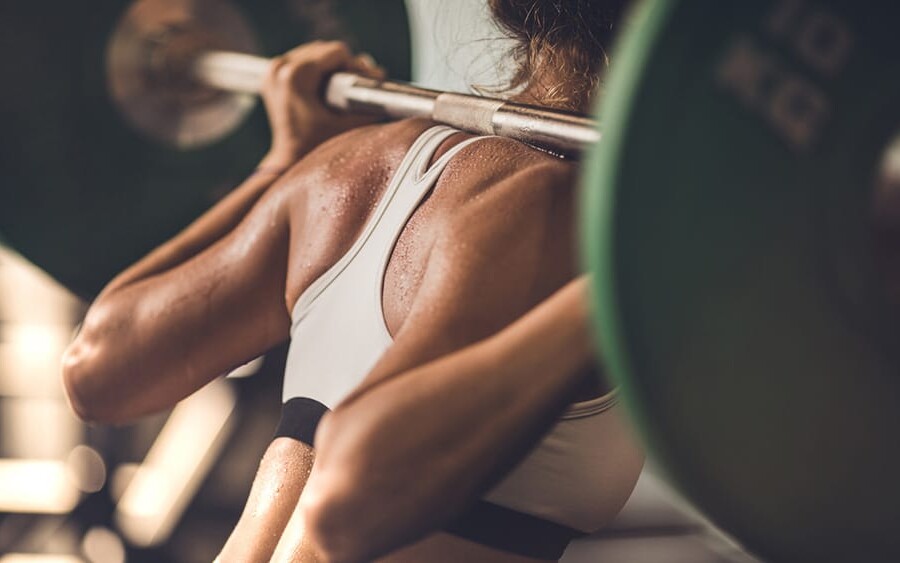Fitness and Performance
How to manage muscle imbalance

Many of us could be walking around with a muscle imbalance – caused by anything from sitting in the same position at our desk for too long, to taking a bigger right-hand stride while running. Without correction, muscle imbalance can lead to pain, injury, and reduced sporting performance. BodyCheck specialist, Jayde Cook tells us what you can do when one side of your body is stronger than the other.
What is a muscle imbalance?
Muscle imbalances occur when muscles on one side of our body, or joint, become stronger than the other. This is a muscle imbalance, and it can be caused by anything from overtraining or incorrect form to everyday habits such as sitting in one position for too long. Muscle imbalances can lead to instability, reduced mobility, pain and even injury. However, there are ways you can fix this…
What causes a muscle imbalance?
We can unknowingly cause a muscle imbalance as a result of our lifestyle and fitness choices. Some key influences include the following:
Strength training
Specific muscles, such as your biceps and triceps, are designed to work in opposition to each other. For example, if your exercise routine includes only biceps curls without triceps extensions, you will develop a muscle imbalance in this opposing pair.
“Another common muscle imbalance is found among people’s core muscles. While people work hard on their six pack muscles, they don’t always strengthen the rest of their core muscle group – the deep abdominals, the back and buttocks. These work together to reduce the load your spine experiences during everyday life. A weak or imbalanced core allows these regular movements of day to day life to stress your bones, joints, muscles, and ligaments.” Says Jayde.
Repetitive motions
Repetitive motions are a common cause of muscle imbalance. Repeating the same movements in daily life or performing the same exercises with every workout can eventually lead to muscle imbalance. When your muscles are used repeatedly for the same actions, they can remain in a state of semi-contraction, which can change the position of the joint.
Poor posture
Maintaining a poor posture can result in muscle imbalances of the upper body, specifically the shoulders and upper back. Posture is the resting position of the body, and poor posture can lead to inefficient movement patterns that increase your risk of injury. For example, allowing your body to roll forward in a slouched position can cause shortness in the muscles of the shoulders, and a lengthened strain in your lower back.
What are the symptoms of muscles imbalance?
A muscle imbalance can go undetected for a long period of time. But it always catches up in the form of pain, injury, or reduced sporting performance. “Many runners come to our clinic completely unaware that by changing these previously unidentified muscle imbalances, they can run faster, for longer.” Says Jayde.
That’s why we offer BodyCheck – a bespoke assessment designed to identify your individual strengths and weaknesses, catch underlying problems that may be caused by muscle imbalance early, and create a personalised lifestyle and performance programme to keep your body working at its very best.
How can I fix my muscle imbalance?
Whether you’re feeling a muscle imbalance in your shoulders, hips or legs, there are ways to address it. And that doesn’t mean upping your weights and reps on the weaker side!
Muscle imbalance in your hips
Muscle imbalances can commonly be found in your hips, leading to painful conditions such as Trocantic Bursitis (hip pain caused by inflammation of the fluid-filled sac, or bursa, on the outer edge of your hip) and Runner’s Knee.
Monster walks
To improve muscle imbalance in your hips, try monster walks. Place a resistance band around both legs. Step out wide so your feet are between hip-width and shoulder-width apart. Then step forward and out to the side. Take “monster,” big steps, keeping your feet as wide apart as you can while moving forward. Then walk backwards in the same manner. You can do both a low monster walk (more of a squat) and a straighter leg monster walk.
Side Leg lifts
Another beneficial exercise is side lying leg lifts. Lying on your side, check that your ankles, knees, hips, shoulders, and ears are aligned. Prop your head on your hand, then pull your abdominal muscles in. Inhale, and as you exhale, engage your abdominals and lift your legs a few inches off the mat. Inhale as you lower your legs back down to the mat, in a controlled movement. Repeat on the other side.
Muscle imbalance in your shoulders
Rotator Cuff Strain, and Shoulder Bursitis (an inflammation of the bursa in the shoulder, which causes pain and sometimes redness and swelling) are common symptoms of muscle imbalance in your shoulders.
Thoracic thread the needle
Start in a neutral position on all fours, keeping your hands under your shoulders and your knees under your hips. Tuck your toes under. Open up your chest to the right as you extend your right arm toward the ceiling. Direct your gaze toward your raised hand. Begin to move your right arm under your chest toward the mat. Your torso should naturally shift to face downward. Keep both knees and your left arm grounded for support. Continue to slide your right arm onto the mat, allowing your right shoulder to rest on the mat. Extend your left arm overhead so your fingertips touch the mat, and rest the right side of your head on the mat. Continue shifting your right fingertips to the left until you feel a stretch. Hold the pose, focus on your breathing and repeat on the other side.
Banded upper cuts
Stand with both feet on a resistance band. Hold each end with each hand and slightly stagger your feet to help with stability. Raise your right hand up in an uppercut motion. Lower arm back down. Repeat with left arm.
Muscle imbalance in your legs
We often lead with one leg over the other so it’s not uncommon to find muscle inbalance in your legs! PFJ Syndrome (pain at the front of the knee) and Tibialis Posterior Dysfunction (when a tendon that attaches the calf muscle to the bones on the inside of the foot becomes inflamed or torn) are common conditions.
Reverse lunges
Start by standing straight and bracing your core muscles. Then take a giant step backwards with your left foot. Bend your right knee until it’s at 90°, and lower your left knee until it is also bent at a right angle. Then push back up and return to the starting position. Repeat on the other leg.
Single leg calf raise
Place the ball of your right foot on a raised surface. Cross your left ankle behind your right, hold onto a bench or a wall with your left hand for balance, and lower your right heel toward the floor. Lift the heel of your right foot as high as you can, giving your right calf an extra squeeze at the top.
Why is it important to even out muscle balance?
Wherever you have a muscle imbalance, it’s important to work on it. “It’s not all about strengthening the weaker muscles. Teaching your muscles how and when to activate in harmony plays a crucial role.” Says Jayde. If you think you might have a muscle imbalance or feel you may be experiencing symptoms of it, then book in for a BodyCheck assessment. Our expert physiotherapists will perform a bespoke head-to-toe body MOT and provide you with a performance and lifestyle plan get you back in balance, pain free and performing at your best.
